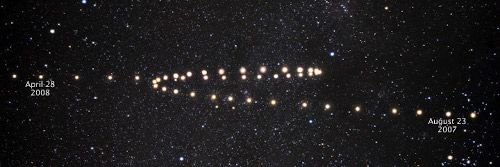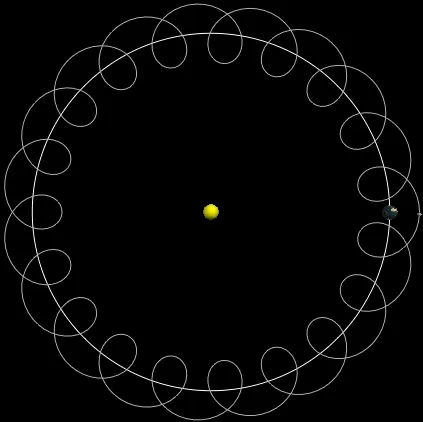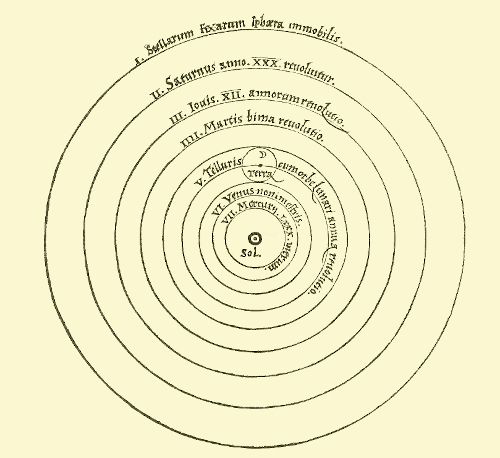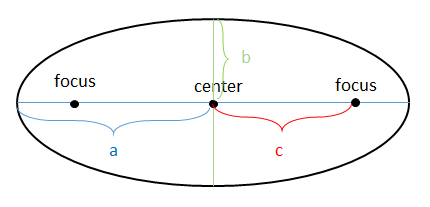Hello everyone,
I hope you are in high spirits. Wait, what does “high spirits” mean again? Does it imply that you are filled with vigour? I take that back; my concern is that you are feeling well not necessarily that you are overflowing with energy. I hope you have been happy.
On the pandemic: We are quickly approaching half a million deaths worldwide. It looks like most countries have their curves flattened. However, in the United States, there continues to be hundreds of deaths per day.
Have a look at the numbers yourself at Our World in Data.
Please look after yourselves and those around you — do not forget, we are still living in a pandemic.
What it means to be open
You know that term open-minded that has been in vogue for some time now.
“You need to be more open-minded.”
At this point, to me, this reads as:
“You need to agree with the thing I said”
I believe the way most of us use the word is quite silly.
If we given good reason, we are helpless but to change our minds.
We walk through a dark corridor; we see a shadowy coiled-up figure resting by the wall. We believe we are in the presence of a snake. We shine our light in its direction and feel relieved. The silhouette was simply a rope.
At this juncture — ask yourself — does a sane person have the choice to continue to believe there is a snake? Is it up to them?
No.
When given good reason, our beliefs shift by themselves.
To continue to believe in the snake when the light reveals the rope — is psychotic — it is to persist in delusion.
When our reasons to believe a theory fall away, when it no longer can explain what we see, it is natural to discard it.
To forcibly hold on to a view even when this is the case is what it means to be dogmatic, what it means to be irrational. When your ideas are stagnant, it means they are not improving; you are not learning. A commitment to a belief is a rejection of progress.
If being open-minded is to mean anything of value it should mean being open to criticism, being able to learn from mistakes, and being able to change one’s mind when good reasons arise.
Simply changing one’s mind to and fro in the absence of good explanation is as Tim Minchin has sung about:
“If you open your mind too much, your brain will fall out.”
Tim Minchin, here
The good, the bad and the anti-rational
The word rational is another word I feel is often misunderstood. This happens not only by those that consider rationality a vice, but also those that see it as a virtue. Some seem to utilise it as a way of pushing others into their views, they say that X is the rational view, and Y is an irrational one. Others correctly notice this, but make the mistake of believing that the problem is with rationality itself. Rather, it is how the word is being used.
Rationality is not a property of views; it is a property of minds — it is about how we correct errors, update our ideas and arrive at better explanations for how things are.
I like the definitions by the great Karl Popper:
“Readiness to accept criticism.”
Karl Popper, Unended Quest
“Readiness to learn from one’s mistakes’”
Karl Popper, The Myth of the Framework
We can make this clearer, by comparing it with irrationality:
Mental processes that hold some ideas immune to criticism
This is made more explicit by the wonderful David Deutsch:
Irrational: When we are chronically not correcting errors
Anti-Rational: When we actively sabotage the means of correcting them
Just as a river flows into the sea, the ideas in our mind flow ever closer towards understanding. When this process is halted, and we find ourselves stuck, this is irrationality. When we actively prevent this flow, hold onto fixed ideas and sabotage the process of discovery — this is what it means to be anti-rational.
This section was brought to you by my the wonderful epistemologist Lulie Tanett. By this, I mean I basically repurposed her tweets — and without asking her for permission — shared them with you, dear reader.
What it means to be a scientist: The Story of Johannes Kepler
The denizens of times past devoted a lot more time gazing up into the sky. It is the same stars we see there every night, the patterns above including the constellations were familiar to them. They were a source of comfort; a dependable, unchanging background to an otherwise all too unpredictable world.
The celestial lights were believed to be the heavens looking down from above. Those carefully observant saw that they traversed the skies in union appearing from the western horizon and fading into the east. Well, almost.
Six mischievous lights rebelled against the order from above. Rather than sweeping gracefully across the sky, they did their own thing and travelled in loops.

These six were dubbed “wanderers” — for they strayed off the path — or in Greek planetos. We now call them the planets.
It was a mystery why these six planets moved as they do, a mystery that the astronomer Johannes Kepler devoted his life to solving.
There were two competing models of the time; one from the Greek Astronomer Claudius Ptolemy and another from the Austrian Astronomer Nicholas Copernicus.
In the Ptolemaic model, the Earth was in the centre of the known universe; the reason the planets appeared to travel in loops in the sky was because that really was the shape of their orbits.
Each planet went around in circles around an invisible epicentre, drawing loops in the sky.
To get an idea of what I mean: imagine if it were possible to stand on the Sun and look up at its sky. From this vantage point, it would be all the planets that would rise and set, travelling across the solar sky.
But now consider our moon, rather than orbiting the Sun directly, it orbits the Earth which in turn orbits the Sun.
Which looks like this:

Looking at the moon from the surface at the Sun, it would draw loops in the sky in the very same way the planets do from Earth.
The Copernican model explained the very same observation but much more elegantly.
There was no need to make the planets travel in elaborate loop de loops, nor was there the need to invoke invisible points that they orbited around, all you had to do was move the centre from the Earth to the Sun.
With the Sun as the new centre, the looping movements of the planets was easy to understand.

The Earth and the other planets were both moving relative to one another.
To take Mars as an example, as the Earth moves faster and is closer to the Sun — and therefore has a shorter orbit — it will overtake Mars. One moment we are approaching the planet, the next we are receding from it. When watching this from the surface, it looks like the loop de loop we see in the sky.
In case you are more visual, here is a video explaining the relative movements between the Earth and the other planets.
As a young boy was a curious one — always asking questions that he shouldn’t have — I am sure you have all heard this story before in other forms. Unable to find friends at his Lutheran school, he spent much time alone sometimes dwelling on his imagined unworthiness, sometimes contemplating the mystery of why things are the way they are.
Here he developed a fascination with geometry and perfect shapes; he saw a beauty in them that he believed underpinned the laws of nature themselves.
“Geometry existed before creation. It is co-eternal with the mind of God. Geometry provided God with a model for creation.
Geometry is, God himself."
Johannes Kepler
It was not until university that young Kepler started to find his way in this world — attending the prestigious University of Tuebingen — where his intellectual leanings were admired. It was a liberation; the same questions that led to him being ostracised as a child were the very reasons for his respect. He was finally recognised as the genius he was.
But all good things come to an end — following his time at Tuebingen, he was assigned the role of high school teacher in Gratz — one he was not very good at.
One day while during a lesson, he was visited by a revelation. He realised that when you draw a perfect circle and place it neatly within an equilateral triangle — one with equal sides — the relative distance between the circle and the points of the triangle was the very same as the known distance between the orbits of Saturn and Jupiter.
He had fervently believed that geometry was a the heart of the natural order — this couldn’t possibly be a coincidence!
Furthermore, it was known that six planets wandered the skies and there were exactly five perfect solids, precisely the amount Kepler needed.
- The Tetrahedron (perfect triangular pyramid)
- The Cube
- The Octahedron (eight-sided shape with triangles as the sides, think two square pyramids stuck together)
- The Dodecahedron (twelve-sided shape with pentagons as the sides, looks a little like a soccer ball)
- The Icosahedron (twenty-sided shape with triangles as the sides)

Just like the circle in the triangle; imagine a sphere in a tetrahedron, inside a sphere in a cube, inside a sphere in an octahedron and so on up to an icosahedron. These five solids embedded within one another, he believed was the hidden support for the orbits of the planets — an explanation for why they moved the way they do.

Later that day, he went home and examined the relevant data society had on the orbits of all the other planets, to see if they fit the model of the perfect solids. Alas, the best observations he could find failed to conform to his revelation.
But this could be because the measurements were imprecise!
Kepler refused to believe that it was his beloved theory that was at fault and took refuge that it was the observations that were wrong.
Our hero wanted to get to the bottom of this. He needed the most precise measurements of the planetary motion he could find. The man known to have the most accurate and comprehensive set of observation of all the planets was the astronomer Tycho Brahe. He as fortune would have it happened to invite Johannes Kepler to work with him at his estate.
Brahe and Kepler were different breeds of men.
Kepler was quiet, reserved and introspective.
Brahe was loud, flamboyant and proud.
Brahe lived lavishly and very socially, he hosted suppers and parties every night, always gorging himself with expensive food and drinking to excess. He has a grand estate, wore fine garments, had a house filled with servants and even had a golden nose (he lost his in a duel over who was the better mathematician in his youth).
Kepler simply wanted the data. Brahe would not be so direct as to give them to him, but rather playfully revealing bits and pieces of it in passing.
He had a dilemma, after all. He needed Kepler to interpret all the data he had found — yet was he simply to give away his life’s work to a rival?
The back-and-forth went on for months. All this time Kepler frustratingly grew no closer to the answers he sought.
The day soon came, however, when Brahe’s lavish lifestyle caught up with him. According to Kepler, on Brahe’s deathbed, he continually repeated the same words as if chanting a mantra...
“Let me not seem to have lived in vain, let me not seem to have lived in vain”
Tycho Brahe
He did not.
Kepler arranged with Brahe’s family to gain access to his wealth of observations. He focused on the most recent measurements, made with the newest and most precise telescopes. Kepler’s model of the solar system predicted that the orbits of all the planets would be perfect circles, and that the perfect solids would determine their sizes.
The first step he had to take was to establish that the orbits were circular.
As he was carefully examining the measurements and calculating whether they were consistent with his theory, he found that they were not.
Two of Brahe’s measurements were off his prediction by eight minutes of the arc.
If you remember back to high school geometry, there are 360 degrees in a revolution, 90 in a right angle.
In one degree, there are sixty minutes.
The size of the error was little over a tenth of a degree. Miniscule, right?
Any other man would have disregarded it.
Rather than hold onto his cherished view of an orderly solar system where perfect geometrical solids guided the planets — he changed his mind.
“If I had believed that we could ignore these eight minutes I would have patched up my hypothesis accordingly, but since it was not permissible to ignore them, those eight minutes led to a complete reformation of astronomy”
Johannes Kepler
This is what real openness is. This is what genuine rationality is — what Karl Popper defined as readiness to accept criticism or to learn from one’s mistakes.
He fell in love with geometry and was captured by the beauty of a cosmos marked by its perfection. He had a revelation and devoted his life in pursuit of its potential. Yet when all was said and done, when it was unable to explain the world he saw through those observations, he did not cling to it. Deeper than his attachment to his beloved theory, was the sincere desire to know the truth — this is the spirit of science.
It is because Kepler’s mind was open to criticism, to information that contradicted his theory he was able to progress in this thinking and bring the rest of humanity with him. It was only a few months afterwards, when he had tried the calculations with an ellipse — it worked. The orbits of the planets were not perfect circles but ellipses — and the Sun was not in the centre but rather off-centre at one of the ellipses focii.

It was from here that he was able to describe the motion in his famous three laws of planetary motion and change Astronomy forever.
This lesson on the history of science is brought to you by the wonderful Carl Sagan. It was based heavily on episode three of Cosmos which delves into the life and discoveries of Johannes Kepler.
A crossover episode
I have written a lot about Buddhism in the past. I do not consider myself a Buddhist, but you would be forgiven for mistaking me for one given how much enthusiasm I have expressed for its ideas. The truth is I do consider it unique among our religious traditions.
Did you know that that Tenzin Gyatso, the 14th Dalai Lama once met face-to-face with Carl Sagan?
In an interview with the Dalai Lama, Carl asked the pertinent question directly.
“What happens if the doctrine of a religion — Buddhism, let’s say — is contradicted by some discovery in science? What does a believer in Buddhism do?”
“For a Buddhist, there is no problem. The Buddha himself made clear that the important thing is your own investigation. If your findings are the opposite of the scripture’s explanation, you should rely on your own findings.”
...
“(If there is) scientific findings with careful investigation, then Buddhists have to accept. So no problem.”
This attitude is a radical departure from the typical religious leader. If he was serious about these words, then this is precisely the same spirit of science that Johannes Kepler demonstrated in his life — or as Karl Popper put it — readiness to accept criticism.
Only when the river is not stagnant will the water arrive at the sea, only when the mind is willing to learn from their mistakes will one arrive at understanding.
This very attitude is not only compatible with Buddhism, but rather is an essential teaching of the Buddha himself.
The Buddha always insisted that his teachings were never taken on authority, but examined carefully against reason and experience.
“Just as a goldsmith scrutinises his gold — by cutting, heating and hammering — so too must you carefully examine my words and test them against your experience. Do not accept what I say simply out of reverence to me.”
“You are your own master.”
Siddhartha Gautama, the Buddha
“If I had more time, I would have written a shorter letter.”
Blaise Pascal
And I went and wrote another long letter, if you are still here then — thank you — you are the reason I write.
The purpose of this letter was to talk about what it meant to be open-minded and what it meant to be rational, but I ended up giving you all a lesson in astronomy and history in the process.
I hope you enjoyed reading through it and learned something along the way!
Please look after yourselves, but also please enjoy yourselves — it’s the proper way to live life after all.
Warmest,
Sashin
Discussion